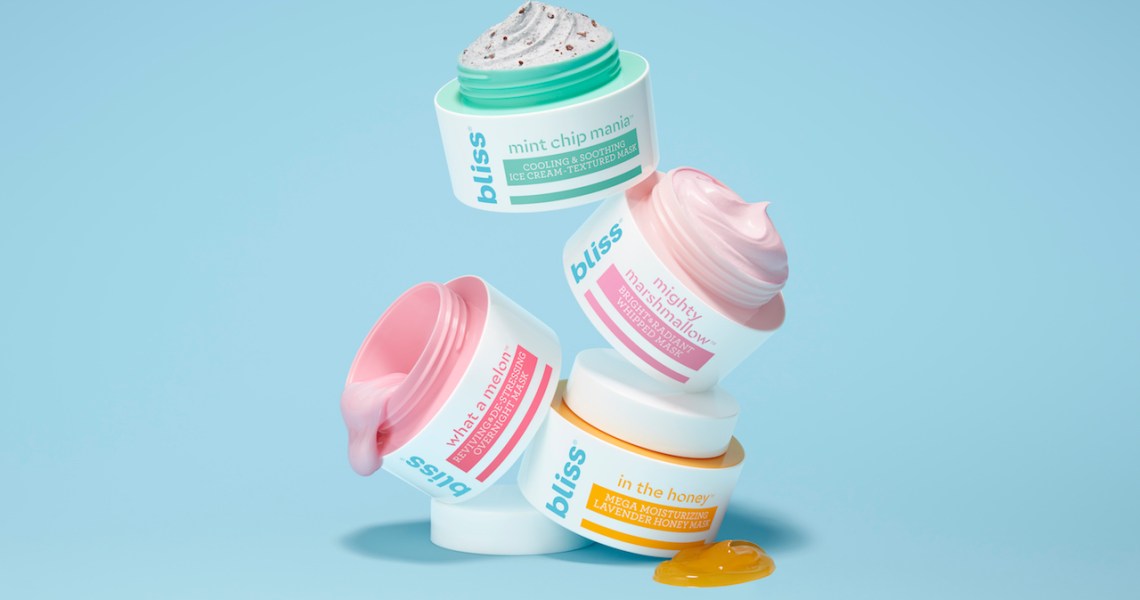Following a rebrand in February 2018 to focus on younger shoppers and mass markets, skin-care brand Bliss Skincare determined it needed to better understand this new customer demographic to engage with them.
In September, it launched a five-question skin-care quiz to offer consumers personalized recommendations. By doing this, the brand would be able to gather customer information, including their skin type, age and location. The launch coincided with a product launch of two serums. The products and quiz were shared across unpaid social posts, paid social ads, the brand’s Instagram Stories through a swipe-up feature. Bliss also incorporated the quiz into its website navigation bar, in category pages and in emails on an ongoing basis, with new and existing customers.
“With today’s Gen-Z and millennial consumers, you have to meet and connect with them on a personal level, but also at scale,” said Gabriella Cruz, Bliss Cosmetics senior manager of digital marketing.
Skin-care quizzes on e-commerce sites are no longer a rarity among beauty brands, in part because of the varied use cases for them; for example, Tula and Tatcha have both integrated them into their e-commerce. Skin-care quizzes have become popular as a means of soliciting voluntarily data from customers, rather than relying on third-party data from vendors that have been collecting data from internet tools like cookies. The latter has proven to degrade consumer trust, said Pam Erlichman, CMO of Jebbit, the software-as-a-service company that helped Bliss create its quiz and distribute it.
In addition to using the quizzes to understand customers, Bliss has been able to use the information collected to steer product development and cross-sell products complementing the quiz’s initial recommendations. So far, Bliss has seen 91% of people complete the quiz, with a total of 8,000 customers taking it so far.
“There is a value exchange with something like a personalized quiz,” said Erlichman. “Brands [are no longer focused] on big data anymore, instead focusing on four or five important points of actionable data. With a quiz, they can set the attributes they want to capture.”
To promote the quiz at launch, Bliss included in its Instagram Stories a call-to-action to take it, through the swipe-up feature. It garnered 500 swipes on the first day, when the brand typically sees between 10 and 100 daily engagements, Cruz said. The quiz is currently promoted three times a month through unpaid social posts on the brand’s Instagram channel and is also promoted through paid social ads, though Cruz declined to share the brand’s investment.
Ad position: web_incontent_pos1
Across email, the quiz has been integrated into one of the four “welcome series” of emails sent to new customers who provide their email address to earn a 15% coupon code. The brand has 1 million people in its email database; it sends two emails a month that include the quiz. Emails with the quiz have an email open rate of 40% — compared to the typical 15% open rate — because of the call-to-action in the subject line is to learn about their skin, said Cruz.
When it comes to using the quiz for additional product recommendations following the initial quiz completion, Bliss sends approximately four emails a week featuring those products.
Cruz also credits the quiz with being able to help update Bliss’s CRM of existing customers to gather accurate and relevant information about them and correct wrong assumption.
In January, Bliss will offer a new skin-care quiz to coincide with the launch of three vitamin C products. It will be trivia-focused on the brand’s history as a spa brand. Bliss will invest more resources and paid social behind the quiz compared to September, but she declined to elaborate.




